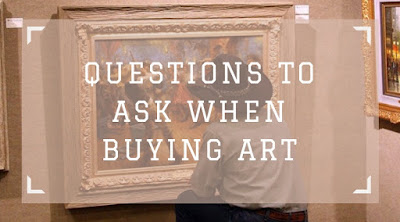Questions to Ask When Buying Art
A lawsuit filed in London against Old Masters dealer Richard Green got me thinking about how much research should a buyer do before acquiring a new piece of art? Collector Gary Klesch purchased two paintings for €5 million ($5,671,000) from Green. Klesch later found out that Green had purchased one for €1.45 million ($1,645,000) and the other for $882,000. The Art Newspaper first reported the lawsuit, which you can read here. While the works are not American Western pieces of art, it still got me thinking about how much due diligence should collectors do when adding a work of art to their collection? Richard Green said he would have disclosed the purchase amounts if Klesch would have asked. Does the dealer have a responsibility to disclose his purchase amounts? The majority of auction records are now disclosed through price database sites like ArtNet and AskArt. Those results are only a few clicks away, and have made the art industry as a whole a lot more transparent. Still, what questions should collectors ask when they're close to pulling the trigger on a piece of art?
1. Learn as much information about the artist as you can. The overall value and pricing of a painting will derive from the notoriety of the artist, so ask questions to identify how well-known is the artist. Has the artist been published? Does the artist's work hang in any museums? What awards and honors have the artist earned? The more you can learn about the artist, the better you will understand the market for the artist.
2. This probably goes without saying, but confirm the details of the art. Is it signed and where? What are the exact dimensions? What is the medium? These are all factors that will affect value, so it's worth it to confirm the details. The signature is very important and easy to overlook. A painting signed by Charles Russell is worth a hell of a lot more than a painting that's unsigned and attributed to him. The larger the painting, the more valuable it's typically going to be. Is the title the original title the artist gave the painting? While it doesn't directly affect the value of paintings, it can be helpful in researching the work of art. Because auction records are so prevalent now, I've seen titles changed so they aren't as easily identified with previous sales of the same painting.
3. How does the painting fit within the artist's body of work? Is it a subject matter the artist is known for? At what stage of the artist's career was it created? While some collectors like the uniqueness of works that's outside of what an artist is known for, resale values tend to be higher on works that helped gain the artist notoriety in the first place. That subject matter will have more demand because it's identifiable. The best way to train your eye is to look at a lot of art. Even better, look at a lot of art by the same artist, and you will be able to identify the subtle nuances of quality. It's like differentiating between a good wine and a bad wine. You can't identify the differences until you've tried them all, and then you will have a better understanding of what you like and don't like.
4. Ask about the provenance. What is the history of ownership? This is more important for historical works, but can apply to resale pieces by more established contemporary artists. Provenance can potentially add value if it came from a museum or a well-known collector. It can also assist in the authentication process.
There's no limit to the number of questions you can ask when adding a piece to your collection. The key is feeling comfortable once you pull the trigger. No one wants to have buyer's remorse, and with a little due diligence, that remorse can be prevented. Take advantage of consultants like myself, or any other dealer you trust to help you research and make an informed decision. I am more than happy to help even if you're not purchasing from me. I understand that quality works are rare, and you have to take advantage of the opportunities when they arise. At the end of the day, I don't want collectors having a bad taste in their mouth because they've been burnt. The more interest we can generate in the American Western genre the more we all benefit. The next time you have a piece at auction you have your eye on, call or email me and I'll share what I know about the artist/painting.
 |
| Because who doesn't love Calvin and Hobbes? |





Comments
Post a Comment